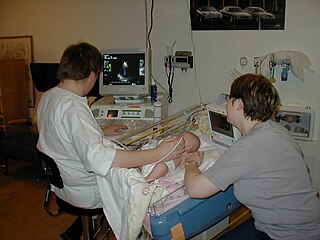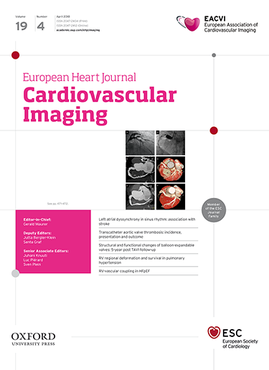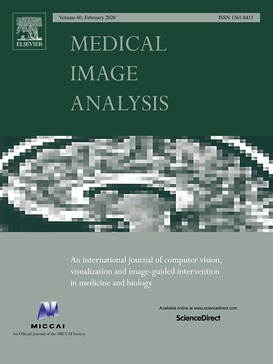
Medical ultrasound includes diagnostic techniques using ultrasound, as well as therapeutic applications of ultrasound. In diagnosis, it is used to create an image of internal body structures such as tendons, muscles, joints, blood vessels, and internal organs, to measure some characteristics or to generate an informative audible sound. The usage of ultrasound to produce visual images for medicine is called medical ultrasonography or simply sonography, or echography. The practice of examining pregnant women using ultrasound is called obstetric ultrasonography, and was an early development of clinical ultrasonography. The machine used is called an ultrasound machine, a sonograph or an echograph. The visual image formed using this technique is called an ultrasonogram, a sonogram or an echogram.

Radiology is the medical discipline that uses medical imaging to diagnose diseases and guide their treatment, within the bodies of humans and other animals. It began with radiography, but today it includes all imaging modalities, including those that use no electromagnetic radiation, as well as others that do, such as computed tomography (CT), fluoroscopy, and nuclear medicine including positron emission tomography (PET). Interventional radiology is the performance of usually minimally invasive medical procedures with the guidance of imaging technologies such as those mentioned above.
Medical physics deals with the application of the concepts and methods of physics to the prevention, diagnosis and treatment of human diseases with a specific goal of improving human health and well-being. Since 2008, medical physics has been included as a health profession according to International Standard Classification of Occupation of the International Labour Organization.

Medical imaging is the technique and process of imaging the interior of a body for clinical analysis and medical intervention, as well as visual representation of the function of some organs or tissues (physiology). Medical imaging seeks to reveal internal structures hidden by the skin and bones, as well as to diagnose and treat disease. Medical imaging also establishes a database of normal anatomy and physiology to make it possible to identify abnormalities. Although imaging of removed organs and tissues can be performed for medical reasons, such procedures are usually considered part of pathology instead of medical imaging.
The American College of Radiology (ACR), founded in 1923, is a professional medical society representing nearly 40,000 diagnostic radiologists, radiation oncologists, interventional radiologists, nuclear medicine physicians and medical physicists.

Radiographers, also known as radiologic technologists, diagnostic radiographers and medical radiation technologists are healthcare professionals who specialize in the imaging of human anatomy for the diagnosis and treatment of pathology. Radiographers are infrequently, and almost always erroneously, known as x-ray technicians. In countries that use the title radiologic technologist they are often informally referred to as techs in the clinical environment; this phrase has emerged in popular culture such as television programmes. The term radiographer can also refer to a therapeutic radiographer, also known as a radiation therapist.
Journal of Medical Imaging and Radiation Oncology is the official journal of the Royal Australian and New Zealand College of Radiologists. It is a bimonthly medical journal covering radiological practice and research in Australasia. It is published by Wiley-Blackwell and was established in 1957.
NMR in Biomedicine is a monthly peer-reviewed medical journal published since 1988 by John Wiley & Sons. It publishes original full-length papers, rapid communications, and review articles in which magnetic resonance spectroscopy or imaging methods are used to investigate physiological, biochemical, biophysical, or medical problems. The current editor-in-chief is John R. Griffiths.
Human Brain Mapping is a peer-reviewed scientific journal published by John Wiley & Sons covering research on human brain mapping.

Acta Radiologica is a peer-reviewed medical journal covering the field of radiology, including diagnostic and interventional radiology, clinical radiology, experimental investigations in animals, and all other research related to imaging procedures. Acta Radiologica is published by SAGE Publications in association with the Nordic Society of Medical Radiology, a federation of societies of Medical Radiology in Denmark, Finland, Iceland, Norway and Sweden. The journal is edited by Arnulf Skjennald.
Radiology is a monthly, peer reviewed, medical journal, owned and published by the Radiological Society of North America. The editor is Linda Moy, MD. The focus of Radiology is imaging research articles in radiology and medical imaging.

The Journal of Nuclear Medicine is a monthly peer-reviewed medical journal published by Society of Nuclear Medicine and Molecular Imaging that covers research on all aspects of nuclear medicine, including molecular imaging.
Investigative Radiology is a monthly peer-reviewed medical journal published by Wolters Kluwer. Its editor-in-chief is Val Murray Runge. The journal covers research on radiology and diagnostic imaging, focusing on magnetic resonance, computed tomography, ultrasound, digital subtraction angiography, and new technologies. An additional focus is that of contrast media research, primarily for diagnostic imaging.

The Journal of Biomedical Optics is a monthly peer-reviewed scientific journal published by SPIE. It covers the application of optical technology to health care, biomedical research, and experimental medicine. The editor-in-chief is Brian W. Pogue.

Medical Physics is a monthly peer-reviewed scientific journal covering research on medical physics. The first issue was published in January 1974. Medical Physics is an official journal of the American Association of Physicists in Medicine, the Canadian Organization of Medical Physicists, the Canadian College of Physicists in Medicine and the International Organization for Medical Physics.
Dose–Response is a quarterly peer-reviewed scientific journal covering research on the dose-response relationship, especially hormesis. It was established in 2003 as Nonlinearity in Biology, Toxicology and Medicine, obtaining its current name in 2005. It is published by SAGE Publications on behalf of the International Dose-Response Society, of which it is the official journal. Since its founding, the journal's editor-in-chief has been Edward Calabrese. According to the Journal Citation Reports, the journal has a 2015 impact factor of 1.855, ranking it 162nd out of 255 journals in the category "Pharmacology & Pharmacy" and 62nd out of 124 in the category "Radiology, Nuclear Medicine & Medical Imaging."

The European Heart Journal: Cardiovascular Imaging is a peer-reviewed medical journal published by Oxford University Press, on behalf of the European Society of Cardiology. The first issue was published in March 2000 with the former name of European Journal of Echocardiography. The journal adopted the current name European Heart Journal: Cardiovascular Imaging in 2012, and is part of the European Heart Journal series of journals.

IEEE Transactions on Medical Imaging is a monthly peer-reviewed scientific journal published by the Institute of Electrical and Electronics Engineers (IEEE). It covers technological aspects of medical imaging techniques. The journal was established in 1982 and since 2019 the editor-in-chief is Leslie Ying. It is sponsored by four IEEE societies, IEEE Engineering in Medicine and Biology Society, IEEE Signal Processing Society, IEEE Nuclear and Plasma Sciences Society, and IEEE Ultrasonics, Ferroelectrics & Frequency Control Society.

Medical Image Analysis (MedIA) is a peer-reviewed academic journal which focuses on medical and biological image analysis. The journal publishes papers which contribute to the basic science of analyzing and processing biomedical images acquired through means such as magnetic resonance imaging, ultrasound, computed tomography, nuclear medicine, x-ray, optical and confocal microscopy, among others. Common topics covered in the journal include feature extraction, image segmentation, image registration, and other image processing methods with applications to diagnosis, prognosis, and computer-assisted interventions.
Clinical Radiology is a medical journal that covers the aspects of clinical radiology, including: computed tomography, magnetic resonance imaging, ultrasonography etc. The journal is published by Elsevier.










